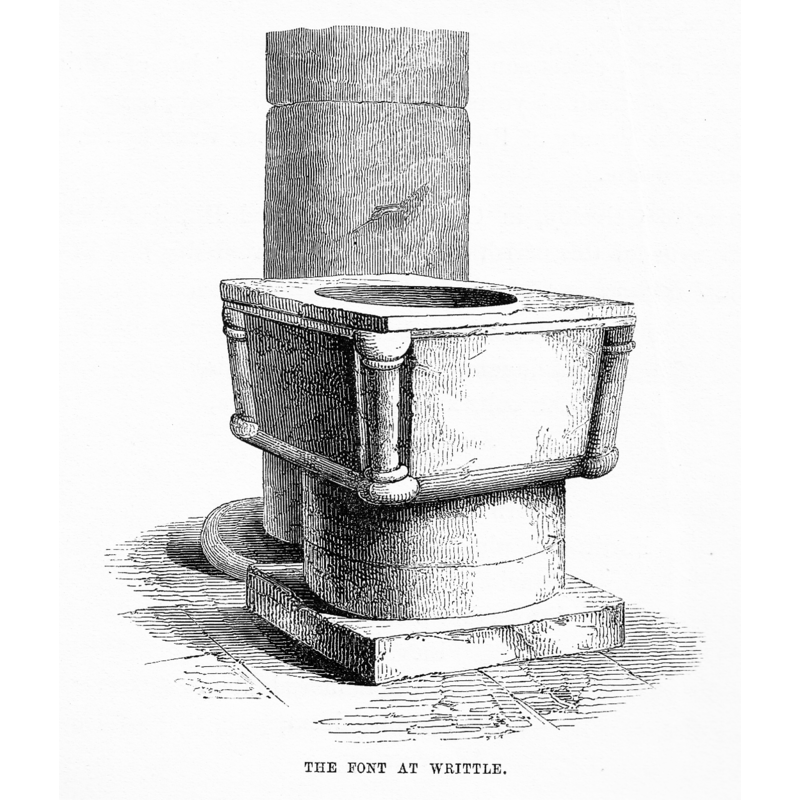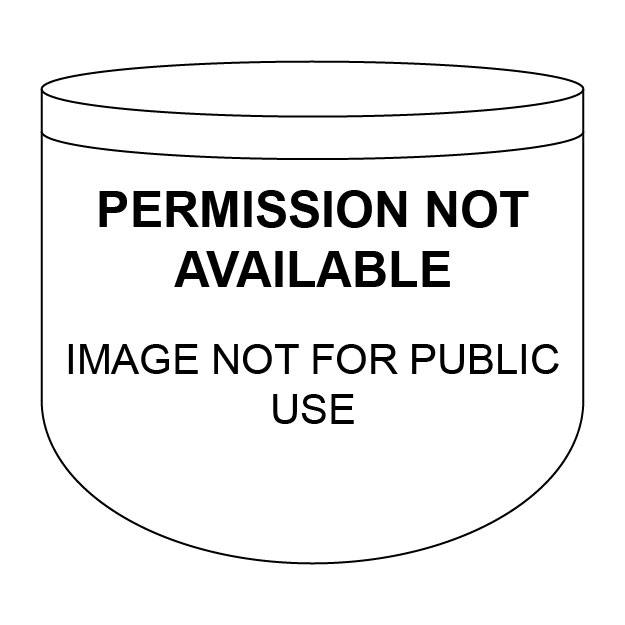Writtle

Image copyright © [in the public domain]
PD
Results: 3 records
B01: design element - architectural - column - columns with capitals and bases - 4
view of font
view of font in context
INFORMATION
FontID: 06695WRI
Object Type: Baptismal Font1
Church/Chapel: Parish Church of All Saints
Church Patron Saints: All Saints
Country Name: England
Location: Essex, East
Directions to Site: Located 3 km W of Chelmsford
Font Location in Church: Inside the church
Date: ca. 1160-1170?
Century and Period: 12th century, Norman
Font Notes:
Click to view
A letter to the editor of The Gentleman's Magazine (issue of May 1795: 390) reports a visit to the "large handsome church" at Writtle and notes: "The font is uncommonly plain." Illustrated in Suckling (1845). Noted in White's Directory of Essex for 1848, as "ancient Norman font". Coller (1861) writes: "The shape the old Norman font, carved in hard stone, bespeaks great antiquity; and there was a grant of the church in 1143 made by King Stephen [1135-1154] to the Priory of Bermondsey." Noted in the Royal Commission on Historical Monuments (Essex, 1916-1923): "Font: probably of Barnack stone, square slightly tapering bowl, at each anglean attached shaft with moulded base and scalloped capital with grooved abacus, 12th-century, much weathered." Described in Cox & Harvey (1907) as a baptismal font "square, with columns at the angles"; they list it as a Norman, perhaps doubtful. In Bettley & Pevsner (2007): "Font. Square, with slightly tapering sides and attached shafts at the corners. Caen stone, c. 1170." The Writtle web page [www.writtle-village.com] dates the font to ca. 1160. The font is indeed a massive square (?) basin with a round inner well lined with lead (?); parts of the font are damaged, at least one of the angles of the upper end missing most of it. It is now [2006] raised on a moulded lower base. The wooden cover is quadrangular in shape, quite thick and heavy, with a metal handle; it does not fit the surface of the font, being much smaller. The pillar on which the basin stood until the 1920s [cf. supra] is now gone, and rests instead on a moulded lower base.
MEDIUM AND MEASUREMENTS
Material: stone, limestone (Barnack stone? / Caen stone?)
Font Shape: square
Basin Interior Shape: round
Basin Exterior Shape: square
Drainage Notes: lead-lined
LID INFORMATION
Material: wood
Apparatus: no
Notes: [cf. FontNotes]
REFERENCES
Bettley, James, Essex, New Haven and London: Yale University Press, 2007
Coller, D. W., The People's history of Essex, comprising a narrative of public and political events in the county [...], Chelmsford: Meggy and Chalk, 1861
Cox, John Charles, English Church Furniture, New York: E.P. Dutton & Co., 1907
Great Britain. Royal Commission on Historical Monuments, An Inventory of the historical monuments in Essex, London: H.M. Stationary Office, 1916-1923
Suckling, Alfred, Memorials of the antiquities and architecture, family history and heraldry of the County of Essex, London: John Weale, 1845
